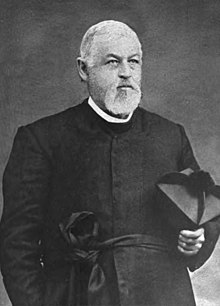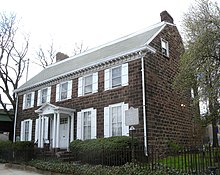Biography
Goodwin was born on April 30, 1822, in Ulysses, New York, and was raised on a farm. He began taking college classes at Yale Law School in 1844, then Wesleyan University, and finally earned his degree in 1848 at Union College. Goodwin began studying at Union Theological Seminary in New York City to become an Episcopal preacher. After taking positions in Bordentown (Christ Church, 1852-1854), Newark (St. Paul's, 1854-1858), and Trenton (Trinity Church, 1859) in New Jersey, he went to California to recover his health from a bronchial complaint, serving parishes in Napa (Christ Church, 1859-1862), Marysville (St. John's, c.1859-1862), and San Francisco (Grace Church/Cathedral, 1862-1867). In 1867, Goodwin came back to New Jersey settled down as the fifth rector of the House of Prayer Church in Newark, where he would serve the next twenty years. Essex County, New Jersey.
Goodwin was motivated to search for a non-breakable, and clear substance on which he could place the images he utilized in his Biblical teachings. He set up a chemistry lab in the attic of the Plum house rectory and sawed a five foot hole in the roof for better sunlight. : 335 On May 2, 1887, the year Goodwin retired from the church he had served for twenty years, he filed a patent for "a photographic pellicle and process of producing same ... especially in connection with roller cameras", but the patent was not granted until 13 September 1898. In the meantime, George Eastman had already started production of roll-film using his own process.
In 1900, Goodwin set up the Goodwin Film and Camera Company, but before film production had started he was involved in a street accident near a construction site and died from complications of a broken leg and pneumonia on December 31, 1900.

